Cappadocia, in a wonderful piece of nature, is a cultural forest where different mysteries that will come across you at every step welcome you, and a Chamber of Secrets has been established in every inch of it.
Cappadocia is a magnificent geography that one cannot see anywhere else in one's life.
Cappadocia, in a wonderful piece of nature, is a cultural forest where different mysteries that will come across you at every step welcome you, and a Chamber of Secrets has been established in every inch of it.
Cappadocia is the discovery valley of countless civilizations that have lived for nearly ten thousand years.
Cappadocia is like love, you can never describe it with words. Without seeing Cappadocia, you cannot experience this love that lovers carve into stones, put a little in the heart of the earth, and run into the sky.
Cappadocia is every color of life. It is the crystal ball of all the excitements that add flavor to life. Cappadocia is an exotic realm that was discovered thousands of years ago, but awaits your discovery.
The adventure of exploring Cappadocia is like a Hollywood movie that embraces you with excitement, joy, happiness, peace, mystery and secrets with every second.
Come and discover Cappadocia! Let's see what you will add to history, your life and your memories.
Cappadocia is one of the mysterious waterfalls of not only Turkey but also the world.
While visiting Cappadocia, you will feel a deep curiosity in every step you take, and you will experience the excitement of what may come your way at the next stop.
You will discover this soft stone world, which looks like a frozen human figure and welcomes you at every corner, in a Cappadocia adventure.
You will wonder how this stone world has resisted the heat reaching 40 degrees, the cold going down to -20, the pouring rain, the flaky snow for thousands of years.
In the adventure of Cappadocia, you will discover the story of how this soft stone world lives in harmony with the pitch-black darkness and the geography where thousands of creatures play.
You will write when you return home with the discovery of Cappadocia, where you have made one of the tales echoing in its corners.
Thanks to its nature, history, mysteries, secrets, legends, art and cultural artifacts, Cappadocia is a completely different world offering a blend of entertainment and romance.
You will discover yourself with the discovery of Cappadocia in this mystical and exotic geography.

Geological studies revealed that the active volcanoes Erciyes, Güllüdağ and Hasandağı, which became active 60 million years ago, with the rise of the Taurus Mountains in the 3rd geological period and the compression of the Anatolian Plateau in the north, spewed lava into the region.
The lava that erupted from the volcanoes of the Cappadocia Region 10 million years ago, which is an inland sea, descended to the plateaus and dried the inland sea, lakes and streams and formed a tuff layer close to 150 meters thick.
These rocks, which contain volcanic ash, sandstone, clay and basalt, formed the unique fairy chimneys with the labor of an artist who worked for millions of years with the effect of the wind along with the floods descending from the Kızılırmak and valleys.
Fairy chimneys have also contributed to the fact that Cappadocia is known as the 'tale land' and 'wonderland'.
The gray or white fairy chimneys, which start from 1 meter in diameter and grow up to 15 meters in diameter, resemble the bride and groom, even though they are million years old.
Thousands of fairy chimneys spread over Cappadocia, concentrated in the Avanos - Ürgüp - Uçhisar triangle.
In Goreme, you can watch the fairy chimneys from the top in the Love Valley, and you can see the mushroom-shaped fairy chimneys in the Pasabag Valley between Goreme and Avanos.
In Ürgüp Şahinefendi, you can buy local Soğanlı rag dolls made among hundreds of fairy chimneys in Soğanlı Valley, one of the three most important valleys of the region.
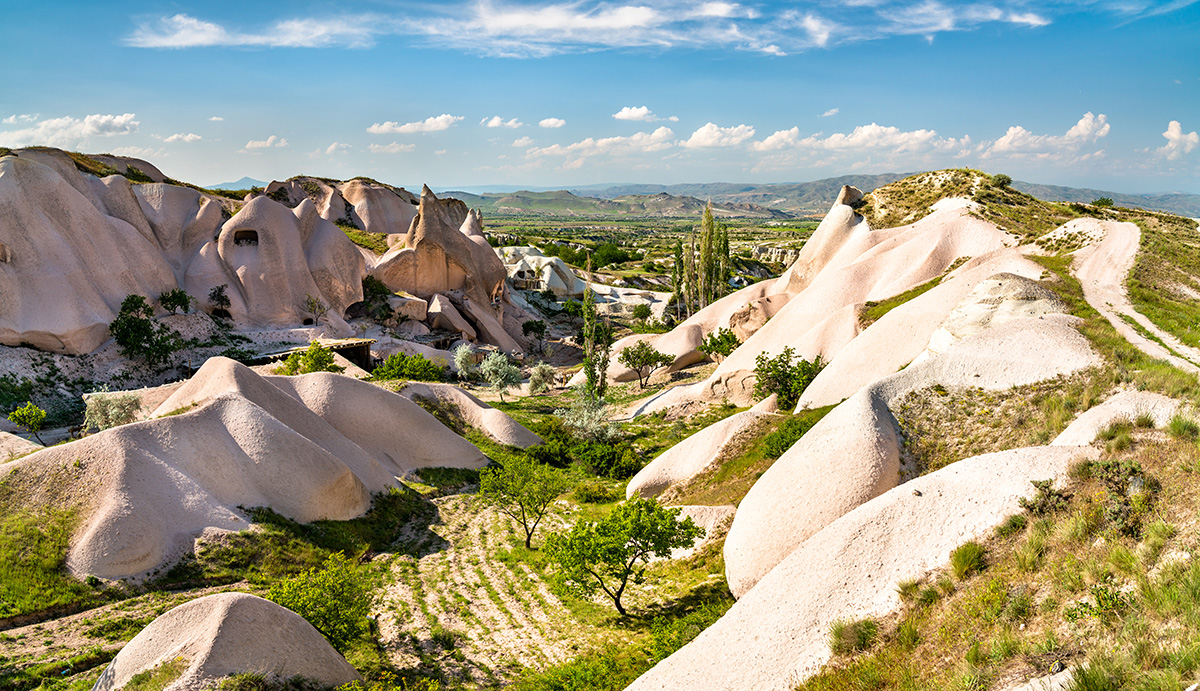
The borders of Cappadocia were drawn for the first time in the Roman period, starting from the Taurus Mountains in the south and encompassing the Eastern Black Sea Region in the north, Aksaray in the west, and Malatya in the east.
The region, which is described as Cappadocia today, consists of Aksaray, Nevşehir, Niğde, Kırşehir and Kayseri, where the geographical formations are concentrated in an area of 250 km².
The most visited regions in Cappadocia, which lies right in the middle, in the center, in the heart of Anatolia, where nature and history are integrated; Uçhisar, Göreme, Avanos, Ürgüp, Derinkuyu, Kaymaklı and Ihlara Valley.
While the great artist was shaping the fairy chimneys, in the historical process, people carved houses, churches and monasteries into the fairy chimneys and decorated them with frescoes.
The written history of Cappadocia, where people first settled in the Paleolithic period, begins with the Hittites.
Being one of the important stops of the Silk Road, Cappadocia hosted the trade colonies and became a commercial, social and cultural bridge between civilizations.
Hittite Kingdoms with Assyrian and Phrygian influences dominated the region until the Persian invasion in the 6th century BC.
Although Alexander the Great defeated the Persians, who gave the name Cappadocia, meaning 'Land of Beautiful Horses', in 332 BC, the resistance he encountered in Cappadocia gave birth to the Kingdom of Cappadocia.
Romans began to rule here towards the end of the 3rd century BC.
Cappadocia, which became one of the important centers of Christianity after the Hittites, was a great safe haven for Christians escaping from the Roman Empire, with houses carved into the rocks, underground cities and churches during the Roman Empire period when Christianity was forbidden. Uçhisar Castle, Kaymaklı and Derinkuyu Underground Cities are the most prominent examples.
In the 11th and 12th centuries, Cappadocia passed under the rule of the Seljuks and then under the rule of the Ottomans.
An important civilization has been established over a long period of time, from settlements dating back ten thousand years to churches carved into rocks by Christians, to large and secure underground cities.
The houses in the area were built in the 19th century from cut stones on the slopes or from the rocks. Dovecotes were also made in the 18th and 19th centuries.
Cappadocia, which hosts the oldest permanent settlements in the world, has always been important for the greatest states of the period such as the Hittites, Phrygians, Persians, Romans, Byzantines, Seljuks and Ottomans.
Avanos, Urgup, Goreme, Akvadi, Uchisar and Ortahisar Castles,
El Nazar Church, Aynalı Church,
Güvercinlik Valley, Derinkuyu, Kaymaklı, Özkonak Underground Cities,
Ihlara Valley, Selime Village, Çavuşin, Güllüdere Valley, Paşabağ-Zelve Anapınar Village are important settlements where you can visit traditional Cappadocia houses carved into the rocks and Cappadocia pigeon houses.
While enjoying this unique journey in Cappadocia exploration adventures around the world, horse safaris, donkey tours, ATM trips will accompany you, watching the sun rise and set over fairy chimneys will revive your romantic feelings.
Close the curtain of the play you live on on this big stage in the middle of Anatolia by lifting your feet off the ground and rising towards the moon with the blimps cappadocia tours. Cappadocia expedition or Turkey exploration will make you happy.
Cappadocia's four seasons offer beauties. We recommend that you choose the summer months that coincide with the festivals for many activities such as balloon tours, horse safari, donkey tours, nature walks, ATM and cycling, and winter months for a holiday under the snow.
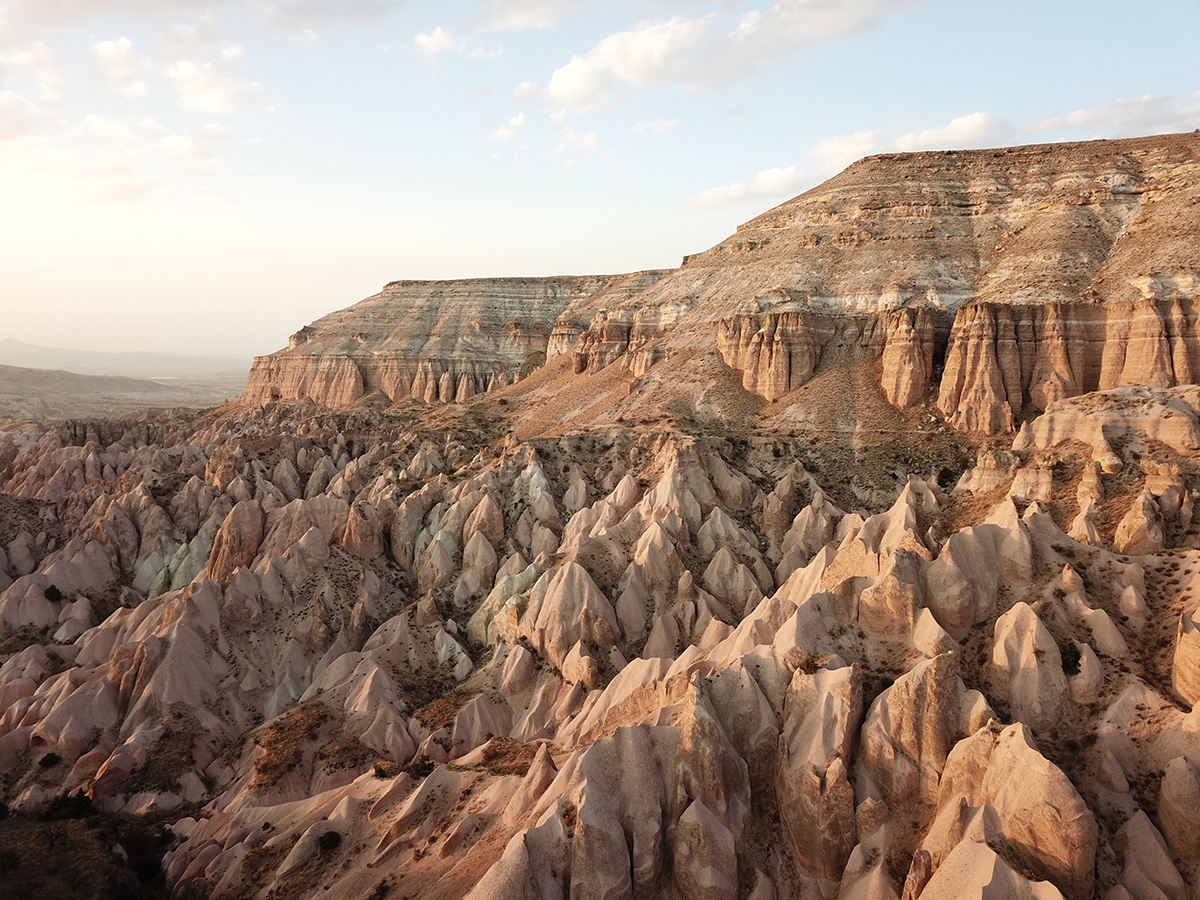
Visit Zelve Open Air Museum to see the churches and mosques of the two communities of different faiths and their tolerance for each other. Zelve ruins are where fairy chimneys are most common and most beautiful.
At Güray Museum, the world's first and only underground ceramic museum, you can see the works of world-famous ceramic artists, ceramics and pottery works of the Roman, Byzantine, Seljuk and Ottoman periods, and the artists working in the workshops.
People who preferred an isolated life lived in this valley during the Byzantine period.
One of the most ideal places for nature walks is Güllüdere Valley. It is a place full of orchards, wineries and churches carved into the rocks.
Kızılçukur Valley, where the oldest churches of the region are located, is one of the most beautiful places to watch the sunset.
There is a three-aisled basilica dedicated to John the Baptist.
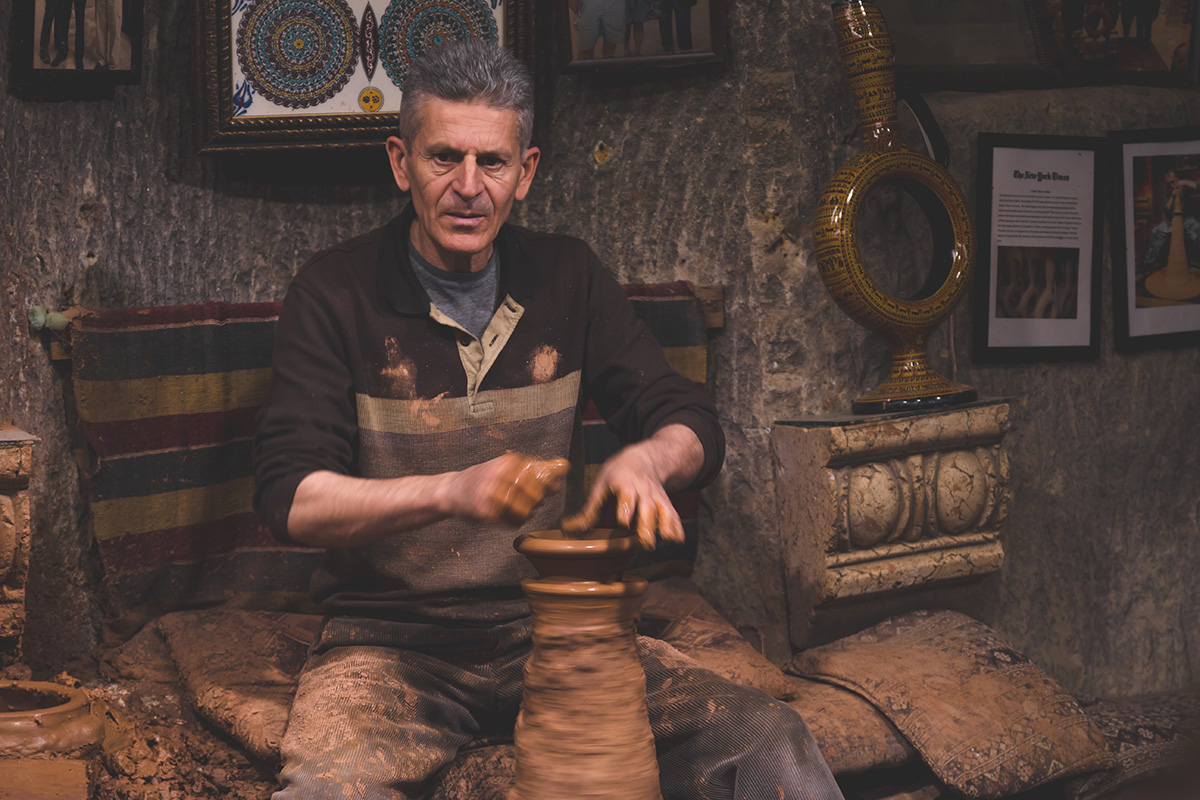
It is the place where monastic life was lived from the 4th century AD to the 13th century, and where the rock hotels and restaurants are dense. It is the center of Cappadoccia.
Panoramic Love Valley is the place where you will enjoy the marriage proposals. Who knows, he will not only enjoy it, maybe you will also make or receive a marriage proposal. If you are married, you can renew your marriage with your spouse in this romantic environment!
Göreme Open Air Museum is a region of churches, cemeteries, chapel, dining halls, wine cellar and monastery, where monastic education took place between the 4th and 13th centuries AD.
Girls and Boys Monastery, St. Basil's Chapel, Elmalı Church, St. Barbara Chapel, St. Catherine's Chapel, Yılanlı Church, Dark Church, Çarıklı Church and Tokalı Church can be seen here.
It is the highest fairy chimney visible from anywhere.
You can find the opportunity to do trekking, cycling, ATM, horse safari, jogging and yoga in the valley, which is named after the pigeon nests that people carved into the rocks.
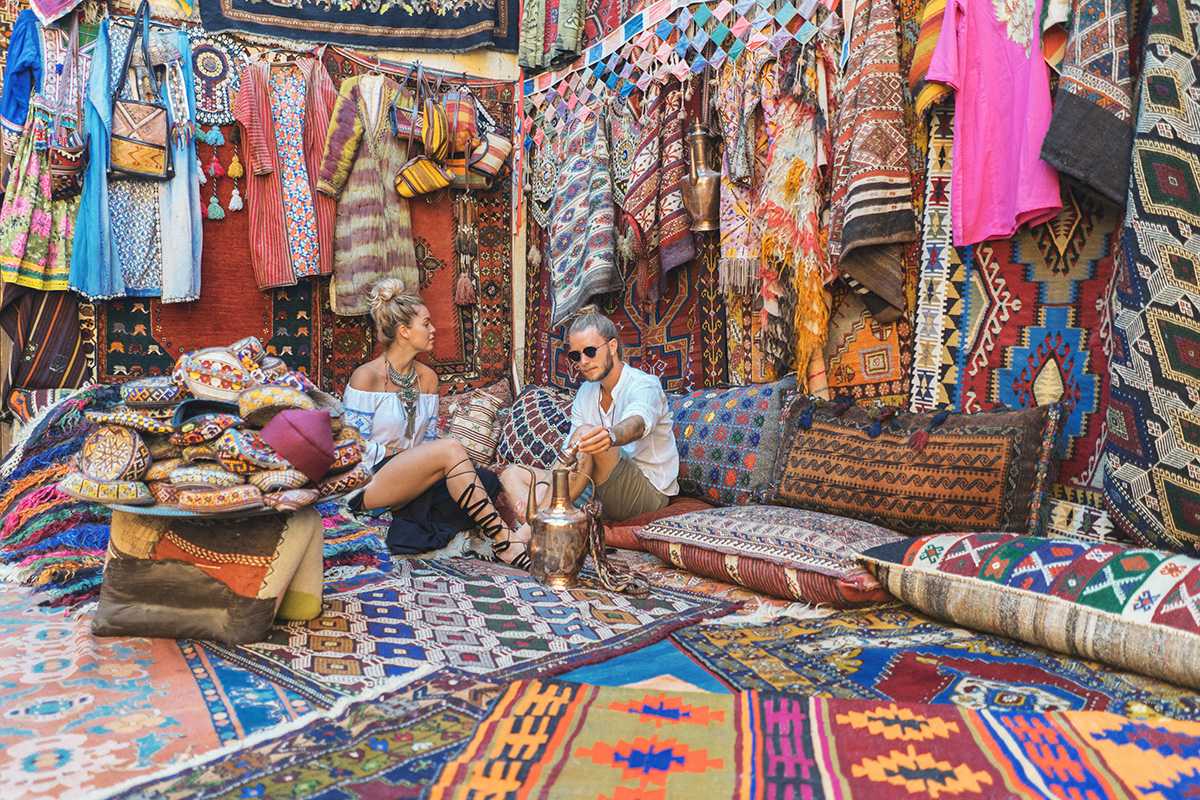
You can watch Erciyes Mountain from the highest peak of Ürgüp. There are two domes here.
You can see the first mobile library, founded by Mustafa Güzelgöz and awarded by the President of the USA Kennedy, and selected as the librarian of the year in Amsterdam in 1969.
Spreading over an area of 6 kilometers, Gomeda Valley is known for its dovecotes resembling a castle or an apartment.
The three fairy chimneys, the symbol of Cappadocia, are called 'three beauties'.
It is the biggest fairy chimney of Cappadocia. The Hittites started to build these for protection at the time.
It was also used in Roman, Byzantine, Seljuk and Ottoman periods. You can watch Ürgüp, Avanos and Göreme from the top.
Ihlara Valley, one of the largest canyons in the world, has been an important religious center since the founding years of Christianity. There are countless churches and historical settlements in the 14-kilometer Ihlara Valley.
The volcanic layer erupted by Hasan Mountain has formed the Ihlara Valley with the natural events and erosion of the Melendiz Stream. Ihlara Valley, which reaches approximately 120 meters, stretches as far as Belisırma, Yaprakhisar and Selime.
From the 4th century onwards, pioneer Christian clergy grew up in the region. 14 of the 105 churches here are open for visitors: Agacaltı, Sümbüllü, Yılanlı, Kokar, Prenliseki, Eğritaş, Direkli, Saint Georgeus, Karagedik, Ala, Bezirhane, Bahattin Samanlığı and Batkın Churches are open to visitors.
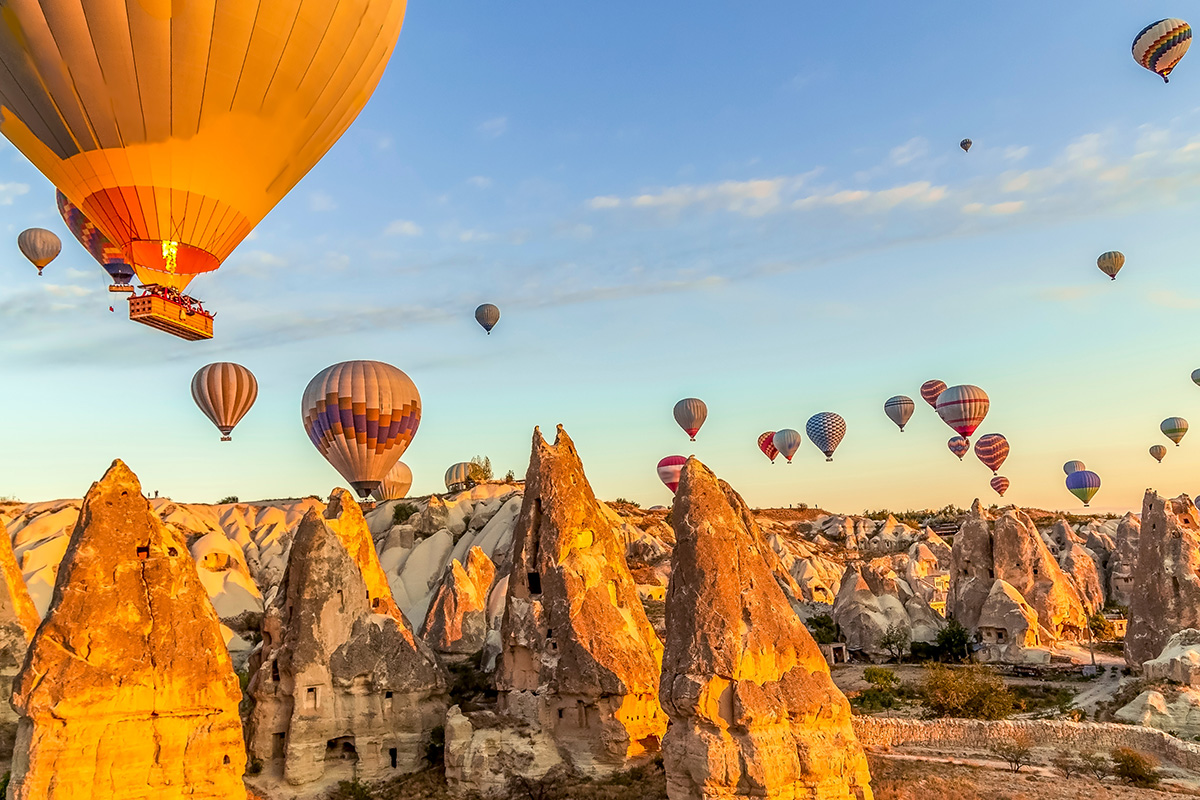
From the Hittites (1650-1200 BC) to the Byzantine, the civilizations here established underground cities to protect themselves from attacks and lived there.
Underground cities were established by connecting the settlements created here with tunnels.
Of the underground cities estimated to be around 200, there are about 35 unearthed.
There are various structures such as ventilation, irrigation, heating, sewage systems and churches that you can visit in the underground cities, which have a city planning.
Derinkuyu Underground City, consisting of eight floors and where 50,000 people can live at the same time, has a missionary school, confessional and baptismal pool.
It is estimated that the 4-storey Özkonak Underground City was built by the Hittites. It has long holes that provide communication between floors.
The underground city in Kaymaklı Town has 8 floors.
Its history goes back to 3000 BC. The city, which was built during the Hittites Period, was expanded by carving other areas during the Roman and Byzantine periods and turned into an underground city.
In the area suitable for the accommodation conditions, there are rooms and halls connected by corridors, wine tanks, water cellars, kitchen and food stores, ventilation shafts, water wells, a church and large bolt stones that close the door from the inside to prevent any danger from the outside.
Kaymaklı Underground City welcomes its guests with its four floors illuminated.
In the center of Turkey, the world's extraordinary fairy chimneys, cave churches, perhaps the greatest hiding place of Cappadocia may have been discovered.
The site dating back to Byzantium was discovered under a hill castle from the Byzantine period under Nevşehir Castle.
Preliminary research for the site, which has yet to be fully explored, shows that its size and features can compete with Derinkuyu, Cappadocia's largest underground city.
Documents belonging to nearly 30 large water tunnels were found in the region.
In the tunnels here, there are living spaces, kitchens, wineries, chapels, staircases, installations that produce lamp oil to illuminate the underground city.
It looks like a large self-contained settlement with air shafts and water channels like the Derinkuyu Underground City.
Nevşehir New Underground City Approximately 500 thousand square meters
Nevşehir University geophysicists estimated the site to be approximately 500 thousand square meters from 33 independent measurements in a systematic survey of 4 kilometers using resistivity and seismic tomography.
Studies have revealed that the underground corridors can go more than 110 meters deep, and accordingly, the new underground city may be bigger than Derinkuyu.
World’s Largest Historical Park
This work will be added to the riches of Cappadocia as a new discovery, a new pearl, a new diamond, a new gold, and will create the “world's largest historical park” with its boutique hotels and art galleries.
This new discovery seems to change the course of Cappadocia.
The mysterious flood disaster in Cappadocia led to the discovery of the 5,000-year-old underground city.
A strange flood in Avanos, in the heart of Cappadocia, discovered a new underground city estimated to be around 5,000 years old.
A new underground city emerged when the municipality, which cleaned the water at the request of 15 families whose houses were flooded, proceeded through the tunnels they found under the houses.
A small human statue was found in the city beneath the three-story and five-kilometer-long houses.
The new underground city is estimated to have an area of about 1.2 million square meters.
Despite the continued archaeological interest in the region, it is believed that there are numerous undiscovered historical sites and artifacts in Cappadocia. Adventures around the world are enriched by the discovery of Cappadocia.
Cappadocia has become a favorite of world-class exploration adventures. Goreme, Ihlara Valley, Soğanlı Churches, Soğanlı Babies, fairy chimneys, Selimiye, Kaymaklı, Ortahisar, Rose Valley have attracted intense interest from Japanese and Chinese tourists in recent years. The discovery balloons will be a sky observation center for you in your exploration of Cappadocia.
please note